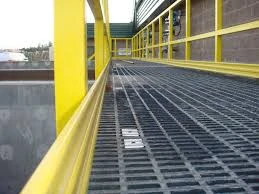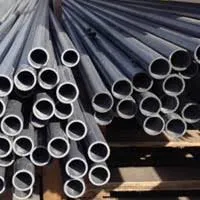
-
 Afrikaans
Afrikaans -
 Albanian
Albanian -
 Amharic
Amharic -
 Arabic
Arabic -
 Armenian
Armenian -
 Azerbaijani
Azerbaijani -
 Basque
Basque -
 Belarusian
Belarusian -
 Bengali
Bengali -
 Bosnian
Bosnian -
 Bulgarian
Bulgarian -
 Catalan
Catalan -
 Cebuano
Cebuano -
 China
China -
 China (Taiwan)
China (Taiwan) -
 Corsican
Corsican -
 Croatian
Croatian -
 Czech
Czech -
 Danish
Danish -
 Dutch
Dutch -
 English
English -
 Esperanto
Esperanto -
 Estonian
Estonian -
 Finnish
Finnish -
 French
French -
 Frisian
Frisian -
 Galician
Galician -
 Georgian
Georgian -
 German
German -
 Greek
Greek -
 Gujarati
Gujarati -
 Haitian Creole
Haitian Creole -
 hausa
hausa -
 hawaiian
hawaiian -
 Hebrew
Hebrew -
 Hindi
Hindi -
 Miao
Miao -
 Hungarian
Hungarian -
 Icelandic
Icelandic -
 igbo
igbo -
 Indonesian
Indonesian -
 irish
irish -
 Italian
Italian -
 Japanese
Japanese -
 Javanese
Javanese -
 Kannada
Kannada -
 kazakh
kazakh -
 Khmer
Khmer -
 Rwandese
Rwandese -
 Korean
Korean -
 Kurdish
Kurdish -
 Kyrgyz
Kyrgyz -
 Lao
Lao -
 Latin
Latin -
 Latvian
Latvian -
 Lithuanian
Lithuanian -
 Luxembourgish
Luxembourgish -
 Macedonian
Macedonian -
 Malgashi
Malgashi -
 Malay
Malay -
 Malayalam
Malayalam -
 Maltese
Maltese -
 Maori
Maori -
 Marathi
Marathi -
 Mongolian
Mongolian -
 Myanmar
Myanmar -
 Nepali
Nepali -
 Norwegian
Norwegian -
 Norwegian
Norwegian -
 Occitan
Occitan -
 Pashto
Pashto -
 Persian
Persian -
 Polish
Polish -
 Portuguese
Portuguese -
 Punjabi
Punjabi -
 Romanian
Romanian -
 Russian
Russian -
 Samoan
Samoan -
 Scottish Gaelic
Scottish Gaelic -
 Serbian
Serbian -
 Sesotho
Sesotho -
 Shona
Shona -
 Sindhi
Sindhi -
 Sinhala
Sinhala -
 Slovak
Slovak -
 Slovenian
Slovenian -
 Somali
Somali -
 Spanish
Spanish -
 Sundanese
Sundanese -
 Swahili
Swahili -
 Swedish
Swedish -
 Tagalog
Tagalog -
 Tajik
Tajik -
 Tamil
Tamil -
 Tatar
Tatar -
 Telugu
Telugu -
 Thai
Thai -
 Turkish
Turkish -
 Turkmen
Turkmen -
 Ukrainian
Ukrainian -
 Urdu
Urdu -
 Uighur
Uighur -
 Uzbek
Uzbek -
 Vietnamese
Vietnamese -
 Welsh
Welsh -
 Bantu
Bantu -
 Yiddish
Yiddish -
 Yoruba
Yoruba -
 Zulu
Zulu
frp pipe
Choosing the Right FRP Pipe for Your Industrial Needs

In the world of industrial applications, material choice can make the difference between success and failure. Fiber Reinforced Plastic (FRP) pipes have emerged as a game-changing solution due to their versatility and robustness. Understanding the potential of FRP pipes and their application is crucial for industries aiming to enhance performance while cutting costs.
FRP pipes are constructed using composite materials, primarily glass fibers and thermosetting resins. The process creates a product that is not only lightweight but also exhibits superior strength and corrosion resistance—key attributes in environments where traditional materials falter. As industries trend towards sustainable and long-lasting materials, the role of FRP pipes has never been more significant.

Experience has shown that FRP pipes excel where steel and concrete pipes encounter limitations. For instance, in chemical industries, where corrosion is a persistent issue, FRP pipes provide a reliable alternative. Their resistance to a wide range of chemicals means they can be used in environments where acidic or alkaline fluids are present, minimizing maintenance costs and downtime.
Application experiences provide insight into the adaptability of FRP pipes. In wastewater management, their ability to handle extreme PH values, both acidic and basic, demonstrates their versatility. For oil and gas industries, FRP pipes’ non-corrosive nature and capability to withstand high pressures ensure they can handle the toughest conditions.
frp pipe
An important aspect of expertise with FRP pipes is understanding their thermal properties. Unlike metal pipes, FRP pipes are poor conductors of heat, which can be advantageous or a limitation based on application requirements. Their thermal insulation properties can help reduce the need for additional insulation in thermal fluid systems, providing significant cost savings.
To ensure reliability, the authoritative aspect of FRP pipes comes from adhering to strict manufacturing standards. Leading manufacturers adhere to ASTM, ASME, and other global standards that ensure each pipe's structural integrity and performance. Understanding these standards can aid professionals in selecting the right type and grade of FRP pipe for specific applications.
Trustworthiness in utilizing FRP pipes also stems from the evolving technology and innovations in composite materials science. Advances in resin technology have improved the mechanical properties of FRP pipes, making them suitable for new and more demanding applications. For instance, the development of high-temperature resins has expanded the use of FRP pipes in the power generation sector.
To maximize the benefits, consult with experts who have a track record of implementing FRP solutions. Their experience can guide the selection process, ensuring the right balance between cost-effectiveness and performance. Certification and installation by trained professionals further ensure that the infrastructure will stand the test of time.
In conclusion, the strategic shift towards FRP pipes represents not just a choice in material but a commitment to long-term sustainability and efficiency. By leveraging the experience of seasoned professionals, adhering to rigorous standards, and embracing innovation, industries can harness the full potential of FRP pipes. Whether infrastructural or specific to niche applications, the benefits are clear reduced maintenance, superior performance, and improved lifecycle costs. Investing in FRP technology is a forward-thinking approach, setting the foundation for future growth and resilience.









